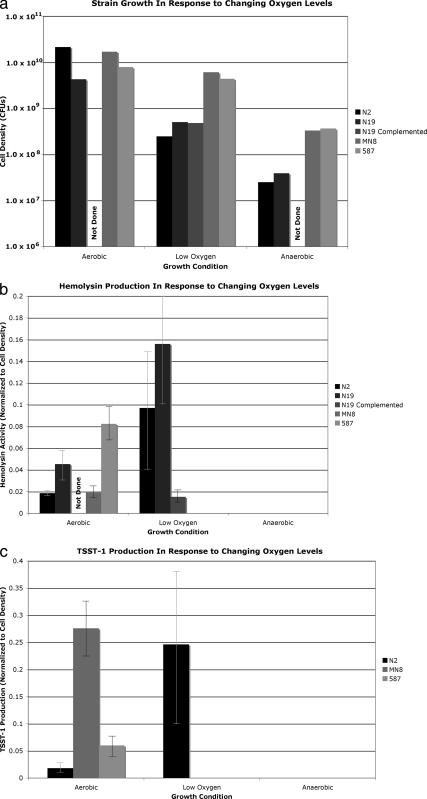FIG. 2.
N-terminal truncations of srrA affect growth and virulence factor production. All data points represent an average of results of four separate experiments. (a) Strain growth in response to change in oxygen levels. Strains N2 and N19 demonstrate growth defects under low-oxygen and anaerobic conditions, in comparison to control strains MN8 and CDC587. Complementation of N19 with wild-type srrAB did not affect growth. (b) Hemolysin activity. Strains N2 and N19 demonstrate increased hemolysin levels under low-oxygen conditions, while control strains demonstrate no production. Complementation of N19 with wild-type srrAB repressed hemolysin production. No strains produced hemolysin during anaerobic growth. Activity is reported in micrograms of hemolysin/1.0 × 108 CFU. (c) TSST-1 activity. Strain N2 demonstrates increased production of TSST-1 under low-oxygen conditions, while neither control strain is able to make TSST-1 under low-oxygen conditions. Strain N19 lacks the gene for TSST-1 and is therefore unable to make TSST-1. TSST-1 was not made by any strain under anaerobic conditions. Activity is reported in micrograms of TSST-1/1.0 × 108 CFU.

